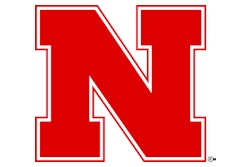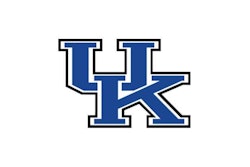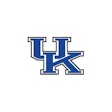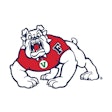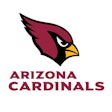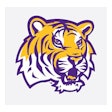Your organization's fiscal health depends upon your ability to recognize dangers and deal with them.
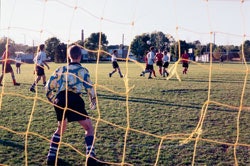 THROUGH BALL No detail is too small when providing for the safety of your facility's users.
THROUGH BALL No detail is too small when providing for the safety of your facility's users.Purchasing products made specifically to keep participants in your programs safe from harm has an obvious benefit beyond altruism - it might help keep lawsuits from being filed against you in the case of an accident, and might improve your chances of winning a lawsuit, should one be filed. But how to choose from among products that range widely in type, cost and, presumably, effectiveness?
You could start by preparing cost-benefit analyses, but that might be unwise. Probably the most infamous cost-benefit analysis of all time - the one prepared by Ford Motor Co. that appeared to weigh the difference between an $11 per-vehicle repair of its Pinto automobile against the monetary value of a human life - demonstrates the downside of such a step.
A better start in the comparison of safety products would be to get a handle on the entire range of safety procedures recommended to owners and operators of facilities, and then choose products accordingly. What do you need to mitigate your potential for liability? Here are some specifics in eight key areas:
1) You need a facility designed to accepted standards of safety. This is an area that should have been handled by the building's architect - and, for most program administrators toiling away in 10- to 50-year-old facilities, it is now largely a moot point. Fixing a problem such as inadequate safety zones around courts and fields is likely to be extremely costly even assuming that it is physically possible. For this reason, responding to unsafe conditions (see #3 and, especially, #6) will be vital in proving to the courts that you took reasonable steps toward keeping participants safe in your facilities.
2) You need to give yourself legal protection. Insurance coverage purchased from specialists in the field of sports, recreation and fitness will provide you with peace of mind, as well as a financial wall of sandbags against legal floodwaters. In addition, a well-written and properly administered waiver will help protect most facility owners and staff from liability resulting from their own negligence.
3) You need to recognize, and train your staff to recognize, potential dangers before accidents happen. So many lawsuits hinge on what the staff knew and when they knew it - and what they did about it. Were they aware that a strength machine was acting balky before it crushed a patron's hand? Did it occur to anyone that a treadmill placed close to an obstruction might result in an injury to a patron thrown off the rear of the equipment? Did groundskeepers inspect the soccer field for uneven terrain before a player broke his ankle stepping in a gopher hole? Did athletics administrators ensure against the development of a culture of hazing, and take steps to prevent "horseplay" from getting out of hand?
4) You need to provide athletes and patrons with personal protection. This begins from the moment a participant sets foot on your property, with a properly administered fitness assessment (clubs should utilize full fitness evaluation systems or individual assessment tools such as body composition analyzers, heart rate monitors and the like) or a preseason physical. Once cleared for participation, protective equipment should be provided to athletes (pads, helmets) or sold to club members (eye guards for racquet sports). As with eye guards, many types of protective equipment are required for certain sports (mouth guards for most contact sports, shin guards for soccer) but not provided by the program administrator. However, even equipment purchased by the customer should still be checked for wear, age and sport appropriateness, and proper fit and function. Ill-fitting or worn equipment should be reconditioned or removed from use.
Specialized gear intended and marketed as safety equipment is available for certain sports - reduced-injury-factor (RIF) balls, Plexiglas facial shields and breakaway bases in baseball and softball are examples. When contemplating the purchase of such equipment, a look at the latest research to gauge their effectiveness is in order. Knowledge of local league rules and the recommendations of national governing bodies couldn't hurt, either.
One specialized product category to keep in mind is lightning detectors/prediction systems, both because thunderstorms are commonly occurring and dangerous to public pool patrons and sports participants, and because traditional methods of counting between lightning flashes and thunderclaps is unreliable at best.
When injuries and other critical events occur, the facility owner will be expected to have the proper lifesaving equipment in the pool area, first-responder equipment wherever practices or games are being held (spine board, vacuum splints, crutches and a first-aid kit, among other items), and in an increasing number of jurisdictions, a working AED readily accessible to staff. Staff, or designated staff members, should be trained in first aid, CPR and AED use, and the prevention of disease transmission.
5) You need to make facilities as secure as possible. The odds of an intruder wreaking havoc in a sports setting are not extraordinarily high, but the odds of getting sued over an act of violence that could have been prevented with reasonable security measures are high indeed. Thus, sports facilities should be staffed and monitored to control entry, and products ranging from bollards and turnstiles to ID systems and security cameras should be employed to keep authorized participants safe.
6) You need to keep patrons safe from potential physical dangers. A high priority in facility operations should be regular walk-throughs to detect unsafe conditions, as well as regular maintenance and prompt repairs to avoid or correct these conditions. Slip-fall accidents occur on ice in the parking lot, on wet surfaces, over unsecured mats, on stairs that lack non-slip edges, over weights left behind by inattentive lifters - almost anywhere, in other words. Blunt-force trauma to patrons can occur if safety netting around the gym, rink or ballfield is improperly installed or in bad repair, or if wall pads are not specified for areas with impact potential or fail to meet minimum impact standards. Unsecured soccer goals can tip over, swimmers can get entrapped by suction occurring at pool drains, patrons can fall off bleachers, athletes can get bacterial infections from equipment, patrons can draw the wrong conclusions from signage that warns of risks - the list of potential dangers is truly endless.
Regular maintenance should already be part of every facility's operational plan, but targeted maintenance and repair should follow walk-throughs. Hazards should be removed - or, if a repair can't be handled in a reasonable time frame, signs should be placed that properly warn of the presence of unsafe conditions.
7) You need to supervise activities. A laissez faire approach to sports and recreation just won't cut it. If a physical education class gets out of control and students attempt to jump over a half-raised volleyball net, and you're not there to stop them - crazy as this sounds - you can be sued for not preventing their reckless actions. During athletic contests, supervisors should be able to, for example, recognize symptoms of serious head injury and enforce a cautious return-to-play policy in the event of a suspected concussion.
Whatever the circumstances, personal trainers, coaches and others who teach sports skills or supervise activities should be qualified and competent. Ideally, they should hold applicable certifications that demonstrate to a judge or jury that the facility owner is aware of the importance of proper supervision.
8) You need an emergency plan in place to deal with external forces. The threat of tornados, earthquakes, fires, floods, acts of terrorism - even if they're once-in-a-generation circumstances - should not be taken lightly. An EAP has far too many facets to recount in detail here, but it is worth pointing out one product category that will help bad situations stay merely bad, rather than turn horrible - communications systems. These will be vital in calling first responders, directing large crowds of people and ensuring that emergency vehicles are not impeded going into or out of your venue.
Ultimately, the most important tool at your disposal is whatever you use to make records of everything you do in the pursuit of safety. Minutely detailed documentation - of all hazards found, all repairs undertaken, all procedures followed in an emergency and all medical care given - will make all the difference in the event that you are slapped with a lawsuit.















